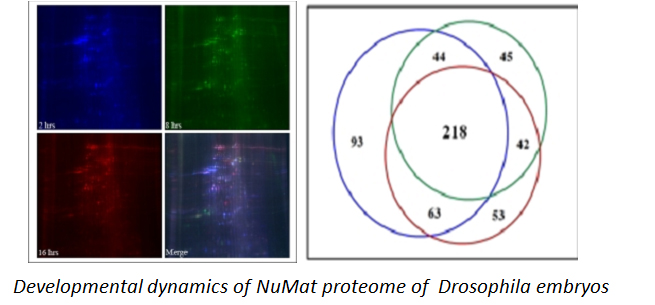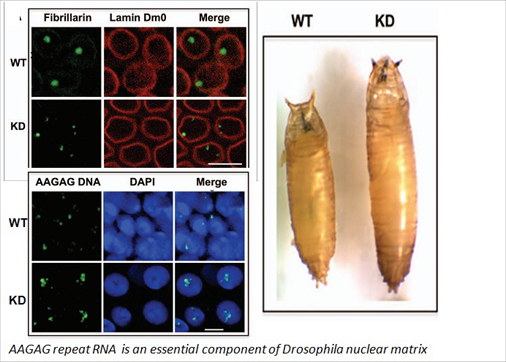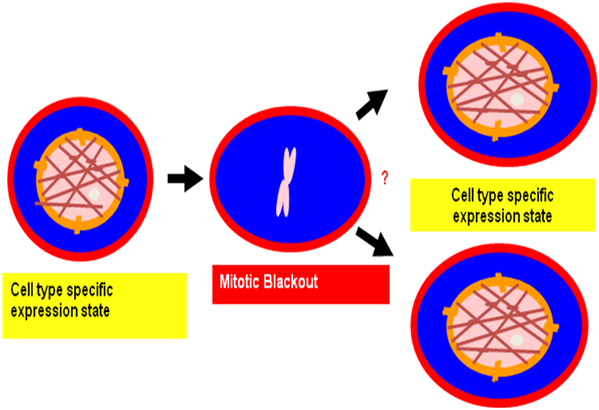|
The eukaryotic nucleus is spatially organized into functional compartments. This nuclear organization plays an important role in genomic packaging and regulation of gene expression. Nuclear Matrix (NuMat), provides the structural framework for the assembly of the nuclear compartments and shapes the nuclear architecture. While NuMat has been visualized by electron microscopy, its molecular constituents and structural features are not well characterized. We are interested in understanding the constituents of the NuMat and its role in epigenetic regulation and cellular memory.
I. NuMat composition
NuMat is a complex structure composed of DNA, RNA and proteins. Together they help to structurally organize the nucleus.
NuMat proteome: We have characterized the NuMat proteome of Drosophila melanogaster and analyzed its dynamics during development. Of about 2500 proteins that constitute the NuMat proteome, about half of the proteins are conserved throughout different developmental stages and, presumably, constitute the core of NuMat structure. While the remaining half is dynamic and reflects the feature of cell type specific nuclear architecture. [Mol Cell Proteomics, 2010]

NuMARs of genome: Nuclear Matrix Associated Regions (NuMAR) are the DNA elements that divide the genome into separate domains by binding to the NuMat. We have carried out genome-wide mapping of NuMAR, to understand the functional partners of these elements, as well as how they modulate the gene expression.
NuMatRNA: It is known that in addition to DNA and proteins, RNAs also contribute to the structure of NuMat, as the NuMat preparations are sensitive to RNases. We are interested in identifying the RNA components of the NuMat investigating its molecular contributions in the nuclear processes. [RNA Biol, 2013]

NuMat and mitosis
NuMat provides the structural framework to the interphase nucleus, it is unclear what happens to the entire NuMat assembly during mitosis. The structural and functional domains of the genome of a cell that reflect the cell type specific transcription profiles are reestablished post mitosis in the daughter cells. It is suggested that transcription factors and specific histone modifications are, at least in part, responsible for transferring the transcriptional profile of the mother cell to the daughter cells. However it is not known at all what structural constituents of NuMat are retained in the mitotic chromosome scaffold (MiCS) that are responsible for the maintenance of the structural domains.

|








